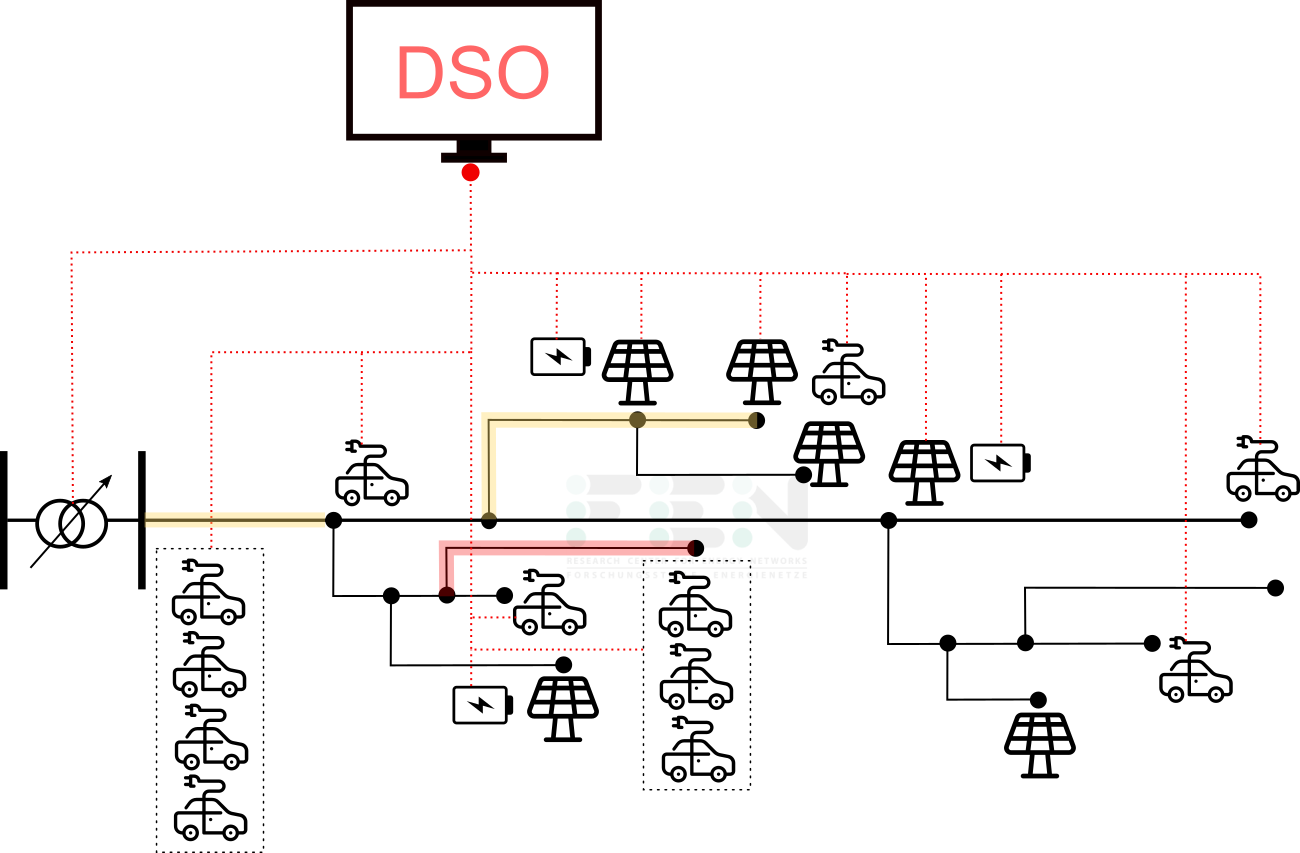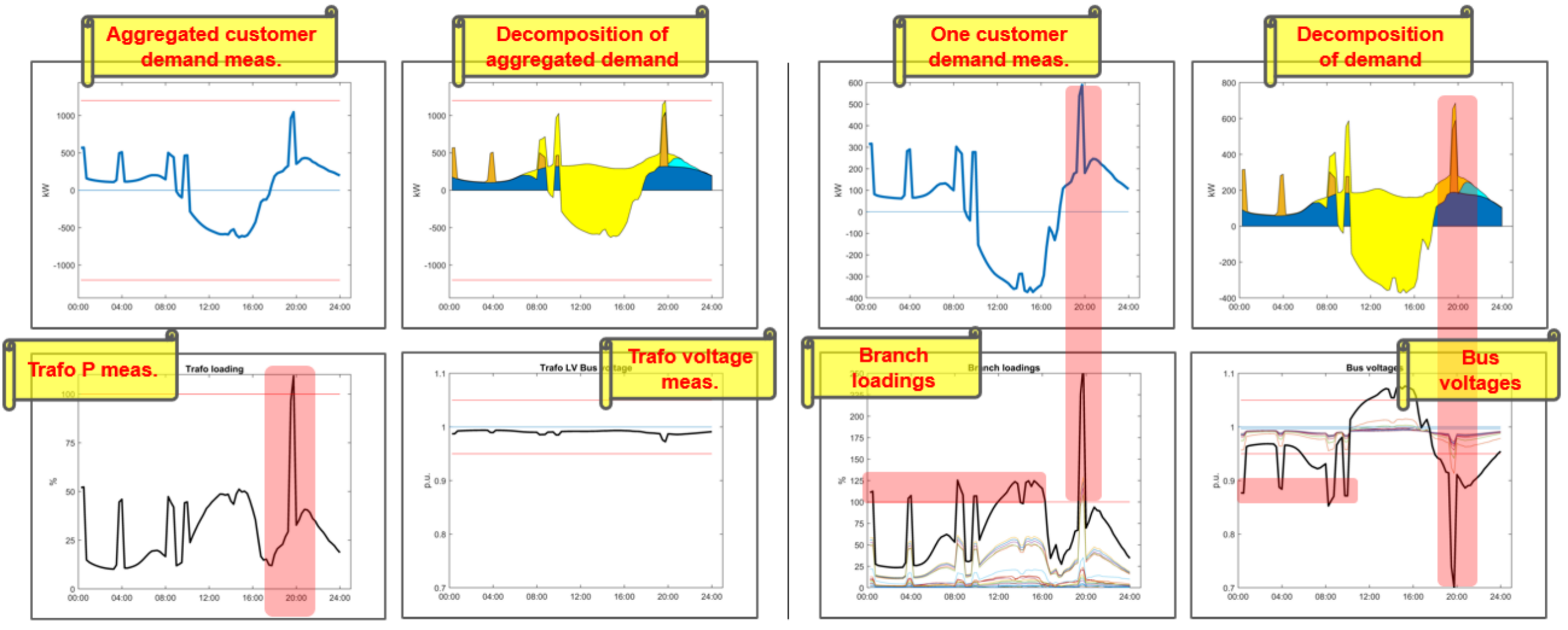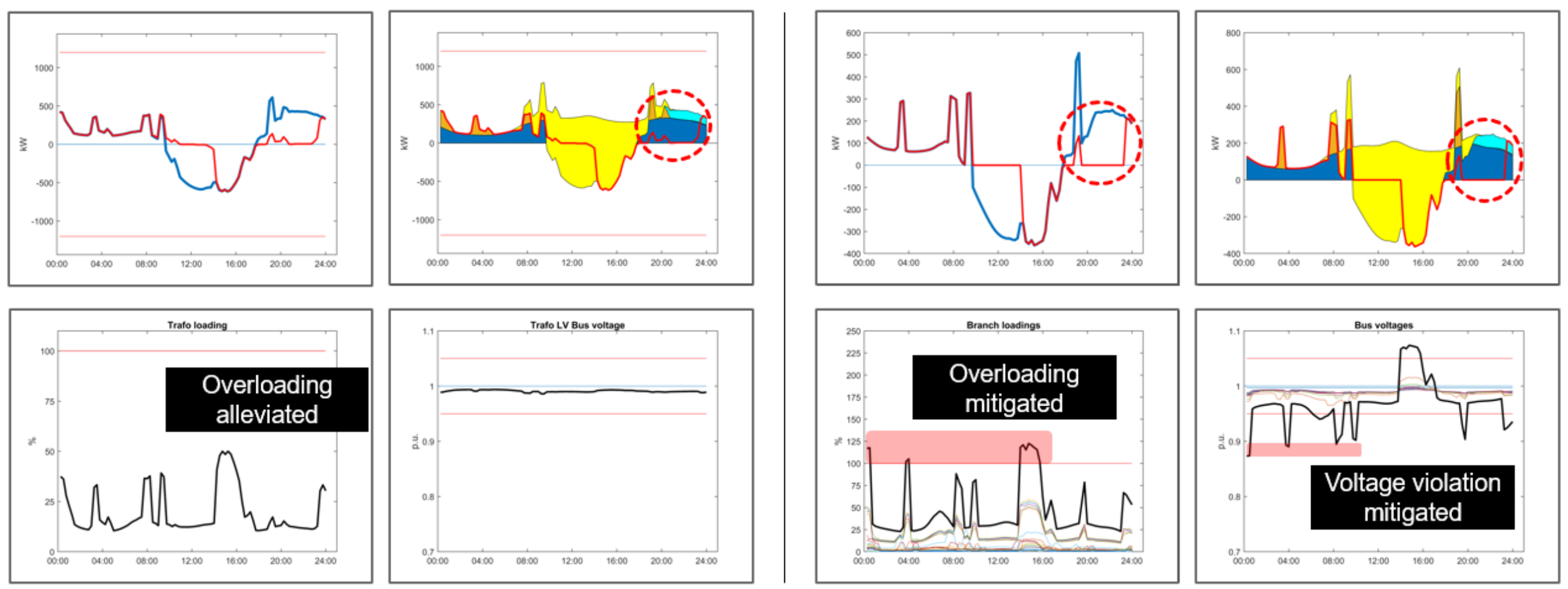DFlex Distribution system in 2050: the role of flexibility in the distribution system with increasing digitalization
(DSO Stability)
- Assess the impact of the technical capability of the flexibility sources
- Assess the impact of the availability (reliability) of the flexibility services (including the reliability of the ICT infrastructure)
- Assess the requirements for further digitalization in distribution and needed data
- Quantify the CHF value of flexibility of distributed energy resources, such as electrified demand (e.g. heat pump, EV charging), solar PV generation and distributed energy storage, to minimize distribution grid investments
DSOs are responsible to ensure reliable electric supply to the customers while maintaining the operational security of the distribution grids by taking the necessary measures to avoid thermal overloading of the assets and to keep the nodal voltages within limits as well as to meet the obligations at the TSO interfaces. The proliferation of new electric demand (e.g. EVs, heat pumps) and distributed PV+BESS systems will require the utilities to adopt new paradigms to avoid jeopardising the grid security while accommodating these distributed resources. Therefore, the DSOs are interested in (i) finding strategies to defer asset investment, and (ii) assessing tariff mechanisms to motivate resource-owners to provide flexibility in terms of reducing/increasing electric consumption and the amount of excess energy generated by solar PVs that is injected to the grid.

1. Identify scenarios, validate assumptions and identify the required input
- For a given grid, proliferation scenarios with varying shares of electric heat pumps, solar PVs, electric cars, and residential battery energy storage systems are automatically created using input parameters that can be selected by the user. [Tool: Scenario creator]
2. Identify and quantify the flexibility needs of a DSO
- Based on the scenarios in item (1), AC power flows are calculated in hourly resolution to identify which violations (i.e., thermal overloads, under-/overvoltages) occur, the frequency and the amount of violations. This information is utilised in combination with the following steps. [Tool: time-series AC power flow for different scenario parameters]
3. Identify the nodes that can provide meaningful flexibility
- Sensitivity matrices are calculated based on AC power flow formulation. The sensitivity of the power flow on a given line to a load/generation at every node is calculated for every branch. The sensitivity of the voltage at a given node to load/generation at every node is calculated for every node. This information is processed and later utilised to identify the candidate locations for flexibility. [Tool: Sensitivity calculation]
4. Assess whether the candidate nodes can provide flexibility
5. Perform sensitivity analysis based on selected parameters
- Different layouts/scenarios for (i) grid transparency (i.e., the proliferation of grid measurements), (ii) remote/central controllability pf the distributed resources [Tool: in-house multi-period optimal power flow (MPOPF) and storage scheduling tool], and (iii) the frequency of access to the smart meter information by the DSOs
- Various feed-in-tariff and retail electricity prices
6. Assess whether DSO shall renumerate the flexibility or invest in the infrastructure (i.e., overhead line, underground cable, transformer, battery energy storage system, shunt reactor/capacitor)


